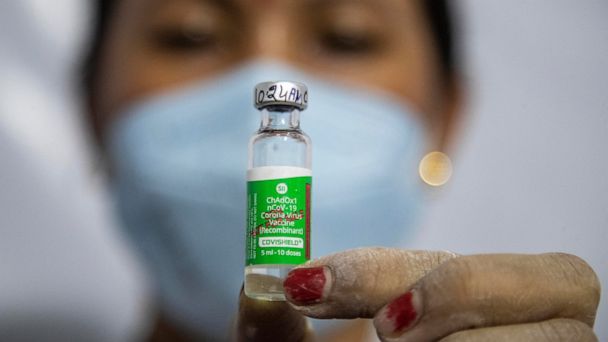India on Thursday launched the third phase of its Covid-19 vaccination drive to cover people above 45 years of age, as the country faces a ...

India on Thursday launched the third phase of its Covid-19 vaccination drive to cover people above 45 years of age, as the country faces a second wave of the pandemic.
India began inoculating its 1.3-billion population in mid-January, in what is the world’s largest vaccination programme.
Doses were initially limited to front-line workers, followed by people over 60 as well as those over 45 with multiple medical conditions from March 1, but the drive has faltered with the slow pace of vaccinations.
Television channels showed people who registered for the vaccination taking the jabs at hospitals across India.
Health Minister Harsh Vardhan assured there was “no shortage of vaccines” and the government would “continually replenish states’ supplies.”
“In a country as vast and populous as ours, significant efforts have gone into strengthening end-to-end supply chain infra to ensure last-mile delivery of Covid-19 vaccine. Priority groups were inoculated first, gradually increasing coverage to other sections as well,” he said.
Amid the slow roll-out, India faces a formidable challenge as the explosion in Covid-19 cases has resulted in the overburdening of the healthcare infrastructure in cities like New Delhi and Mumbai.
On Thursday, India reported the biggest daily surge in coronavirus cases since October, with more than 72,300 infections and 459 deaths.
The surge is due to a new strain, with the situation exactly like the one in Britain when the virus underwent a mutation around Christmas, Randeep Guleria, a top medical expert, told broadcaster NDTV.
India, which at over 12.2 million has the third-largest coronavirus caseload after the United States and Brazil, saw a downward trend in infections from the end of 2020, but the numbers have risen sharply again in recent weeks.
READ ALSO: Rivers govt gives nod as Port Harcourt hosts Int’l Jazz Festival
At the same time, the vaccination drive has to pick up pace since India has administered only 64 million doses so far, still far from the government target of inoculating 300 million people by the end of July.
Domestic media reports have said the poor, particularly in the countryside and remote areas, are also not being covered under the drive.
The Health Ministry has directed states to minimize vaccine wastage to less than 1 per cent. Currently, the average Covid-19 vaccine wastage is estimated at more than 6 per cent.
Health experts have also voiced concerns about poor adherence to safety norms including were contributing to the surge in cases.
Earlier this week, the popular spring festival of Holi was celebrated with large crowds without masks. Millions of Hindus are to take a ritual dip in a holy river in north India this month during the Kumbh Festival.
Physical distancing rules have also been disregarded at rallies and polling during the ongoing elections in some populous Indian states.
India also considered the world’s pharmacy, has so far exported the same amount of vaccines as have been administered locally. In view of the rapidly increasing cases, exports have now been restricted. This also affects the UN initiative Covax, which is supposed to supply poor countries with vaccination doses.
The post India steps up vaccine drive amid alarming rise in Covid-19 cases appeared first on Vanguard News.

No comments